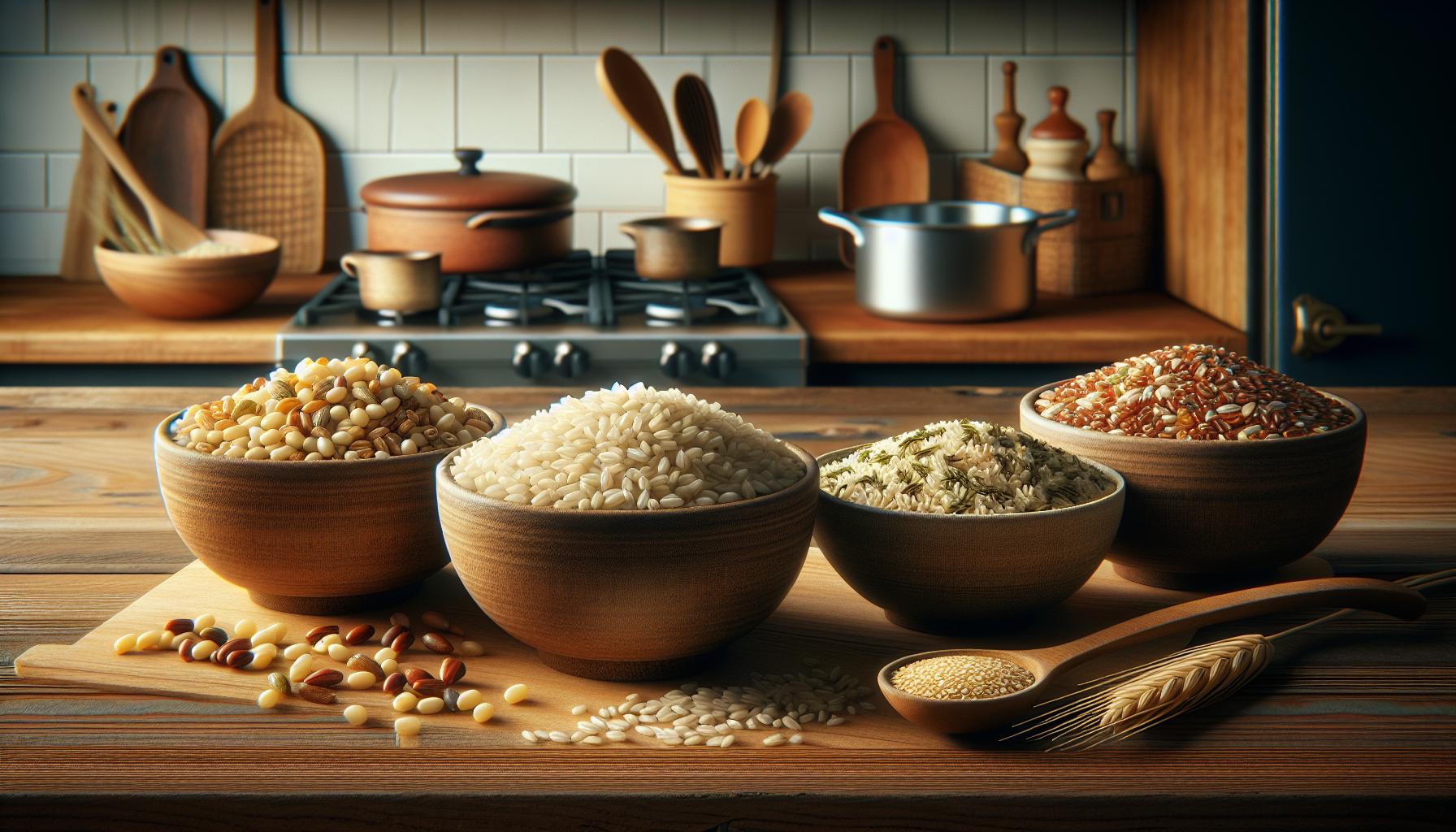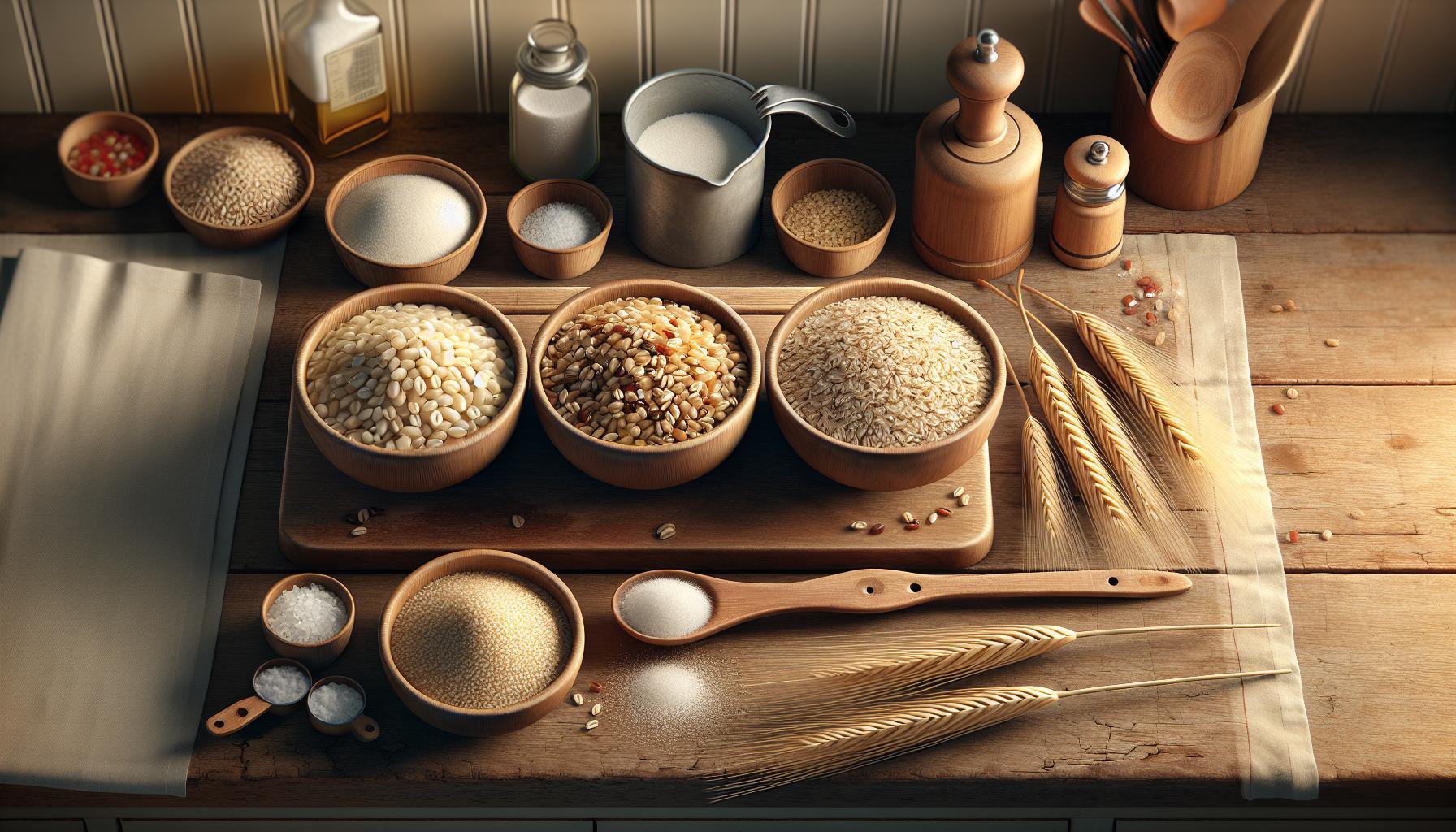
Barley’s nutty flavor and chewy texture make it a delightful yet often overlooked grain in modern kitchens. This ancient cereal grain packs a powerful nutritional punch while offering remarkable versatility in cooking applications – from hearty soups to refreshing salads.
Getting barley just right can transform an ordinary meal into something extraordinary. While many home cooks shy away from this wholesome grain thinking it’s complicated to prepare, mastering basic barley cooking techniques isn’t rocket science. With the right knowledge and a few simple steps, anyone can create perfectly tender barley that’ll have dinner guests asking for seconds.
General Cooking Techniques For Barley
Barley comes in several varieties, each offering distinct textures and cooking properties. Understanding these differences helps in selecting the right type for specific dishes.
Hulled vs Pearl Barley
Hulled barley retains its bran layer, making it more nutritious than pearl barley. This minimally processed form contains 15g of fiber per serving compared to 8g in pearled varieties. Hulled barley creates hearty soups, stews or grain bowls when cooked for 45-50 minutes. Pearl barley undergoes additional processing to remove the bran layer, resulting in a faster cooking time of 25-30 minutes. Its softer texture works well in risottos, pilafs or salads.
| Type | Fiber Content | Cooking Time | Best Uses |
|---|---|---|---|
| Hulled | 15g/serving | 45-50 min | Soups, stews, grain bowls |
| Pearl | 8g/serving | 25-30 min | Risottos, pilafs, salads |
Quick-Cooking Barley Options
Quick cooking barley products undergo pre-steaming to reduce preparation time to 10-12 minutes. Instant barley cooks in 5 minutes due to partial cooking during processing. These convenient options maintain 80% of the nutritional benefits found in traditional barley. Quick cooking varieties excel in weeknight side dishes or breakfast porridges. Flaked barley offers another time-saving option, cooking in 8 minutes while providing a texture similar to rolled oats.
| Product | Cooking Time | Nutrition Retention | Uses |
|---|---|---|---|
| Quick-cooking | 10-12 min | 80% | Side dishes, porridge |
| Instant | 5 min | 80% | Quick meals |
| Flaked | 8 min | 80% | Hot cereals |
Basic Cooking Methods for Barley

Barley preparation involves three primary cooking methods that deliver different textures and flavors. Each technique adapts to both hulled and pearl barley varieties while maintaining their nutritional benefits.
Stovetop Absorption Method
The absorption method creates tender barley using a precise water-to-grain ratio. Combine 1 cup of barley with 3 cups of water for hulled barley or 2½ cups for pearl barley in a saucepan. Bring the mixture to a boil then reduce heat to simmer. Cover the pot with a tight-fitting lid. Pearl barley cooks in 25-30 minutes while hulled barley requires 40-45 minutes. The barley absorbs all liquid resulting in separate tender grains ideal for salads or side dishes.
Pilaf Method
Pilaf cooking enhances barley’s nutty flavor through a preliminary toasting step. Heat 2 tablespoons of oil in a heavy-bottomed pan. Add 1 cup of barley stirring frequently for 3-5 minutes until lightly golden. Pour in 2½ cups of hot broth for pearl barley or 3 cups for hulled barley. Simmer covered for 30-45 minutes depending on barley type. This method produces flavorful grains with a pleasant toasted aroma.
Pressure Cooker Technique
Pressure cooking significantly reduces barley’s preparation time while maintaining its nutritional value. Add 1 cup of barley with 3 cups of liquid to the pressure cooker. Set to high pressure for 20 minutes for pearl barley or 25 minutes for hulled barley. Allow natural pressure release for 10 minutes. The pressure environment creates perfectly cooked barley in one-third of the traditional cooking time producing consistently tender results.
Proper Ratios and Cooking Times

Successful barley preparation depends on accurate liquid-to-grain ratios and precise cooking times. These measurements vary based on the type of barley used and the desired final texture.
Water-to-Barley Proportions
Different barley varieties require specific water ratios for optimal results:
| Barley Type | Water Ratio | Final Yield |
|---|---|---|
| Pearl Barley | 3:1 (3 cups water to 1 cup barley) | 3½ cups cooked |
| Hulled Barley | 4:1 (4 cups water to 1 cup barley) | 3¾ cups cooked |
| Quick Barley | 2:1 (2 cups water to 1 cup barley) | 2½ cups cooked |
Adding ¼ teaspoon salt per cup of barley enhances the grain’s natural flavor. Extra liquid creates softer, more porridge-like results while less liquid produces firmer, separate grains.
Cooking Duration Guidelines
Each barley variety features distinct cooking times:
| Barley Type | Stovetop Time | Pressure Cooker Time |
|---|---|---|
| Pearl Barley | 25-30 minutes | 15-20 minutes |
| Hulled Barley | 45-55 minutes | 25-30 minutes |
| Quick Barley | 10-12 minutes | Not recommended |
The cooking process ends when barley feels tender but maintains a slight chewiness. Pearl barley develops a creamy texture at 30 minutes while hulled barley retains more bite at 55 minutes. Pre-soaking hulled barley for 8 hours reduces cooking time by 15 minutes.
Tips for Perfect Barley Every Time

Achieving perfect barley involves mastering storage techniques and avoiding common cooking pitfalls. These essential tips ensure consistent results across all cooking methods while maintaining barley’s nutritional value.
Proper Storage Methods
Store uncooked barley in an airtight container placed in a cool dark location at temperatures below 60°F (15.5°C). Glass or food-grade plastic containers protect barley from moisture exposure for up to 12 months. Vacuum-sealed packages extend shelf life to 18 months when stored in a pantry. Refrigerate cooked barley in sealed containers for 3-5 days. Freeze portions in freezer-safe bags for up to 6 months, removing excess air to prevent freezer burn.
| Storage Method | Temperature | Shelf Life |
|---|---|---|
| Pantry (Uncooked) | Below 60°F | 12 months |
| Vacuum Sealed | Below 60°F | 18 months |
| Refrigerated (Cooked) | 40°F | 3-5 days |
| Frozen (Cooked) | 0°F | 6 months |
Common Cooking Mistakes to Avoid
Overcrowding the pot reduces grain expansion leading to uneven cooking. Adding too much liquid creates mushy barley while insufficient liquid leaves grains undercooked. Stirring barley excessively breaks down the grains resulting in a gummy texture. Opening the lid frequently releases essential steam extending cooking time by 5-10 minutes. Skipping the rinsing step leaves excess starch causing clumpy results. Adding salt too early toughens the grain’s exterior making it difficult to achieve proper tenderness.
| Mistake | Impact |
|---|---|
| Overcrowding | Uneven cooking |
| Excess Liquid | Mushy texture |
| Over-stirring | Gummy consistency |
| Lid lifting | +5-10 min cook time |
| No rinsing | Clumpy results |
Creative Ways to Incorporate Barley
Barley’s versatility extends beyond traditional side dishes, integrating seamlessly into diverse recipes. Its chewy texture and nutty flavor enhance both classic comfort foods and modern culinary creations.
Soups and Stews
Barley transforms everyday soups and stews into hearty, nutritious meals. Pearl barley adds a creamy consistency to mushroom soups, beef barley stews or vegetable broths when cooked directly in the liquid. Adding 1/2 cup of barley per 4 cups of broth creates an ideal thickness while allowing the grains to absorb the surrounding flavors. In slow-cooked dishes, barley releases natural starches that thicken the broth without additional thickeners. For clearer soups, pre-cook the barley separately and add it during the final 10 minutes of cooking.
Grain Bowls and Salads
Cooked barley creates filling grain bowls and robust salads that maintain their texture for several days. Combining 1 cup of cooled barley with roasted vegetables, fresh herbs or protein sources like grilled chicken creates satisfying main dishes. Mediterranean-style bowls feature barley with cucumber, tomatoes, feta cheese and olive oil. Asian-inspired combinations incorporate edamame, carrots and sesame dressing. For cold salads, tossing warm barley with vinaigrette allows better flavor absorption. The grains retain their pleasant chewiness when stored in airtight containers for up to 5 days in the refrigerator.
Mastering Barley Cooking Techniques
Mastering barley cooking techniques opens up a world of culinary possibilities for home cooks. This versatile grain’s ability to enhance both traditional and modern dishes makes it a valuable addition to any kitchen repertoire.
Armed with the right knowledge about cooking methods ratios and timing anyone can transform this ancient grain into delicious nutritious meals. Whether it’s a quick weeknight side dish or an elaborate weekend creation barley proves itself as a reliable and adaptable ingredient.
By avoiding common pitfalls and following proper storage guidelines home cooks can consistently achieve perfect results while making the most of barley’s impressive nutritional profile. It’s time to let this wholesome grain take center stage in creating memorable healthy dishes.


